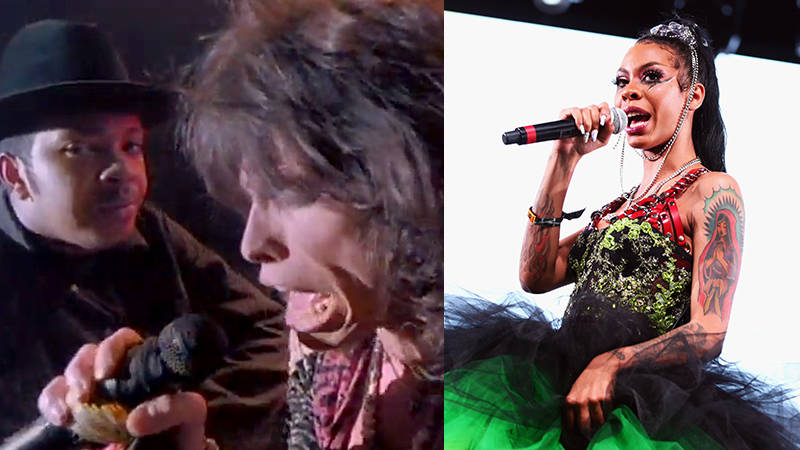In the 1990s, rock artists inspired by hip-hop, like Korn, Kid Rock and Limp Bizkit, were on the rise. Korn’s lead vocalist, Jonathan Davis, was a fan of Ice Cube and the gritty sounds of N.W.A., which was evident in the music he helped create. In 1998, the band collaborated with Ice Cube on “Children of the Korn,” exchanging hardcore verses that spoke to Gen X and Y rebellion, advising parents to “Report to your local church / Report to your local police department / It’s going down.” But Davis always resented the “rap metal” label, calling it “corny” in a 2007 interview.
The ’90s also birthed the rap girl/pop girl formula that was showcased on Melanie C (of Spice Girls) and Left Eye’s 1999 song, “Never Be The Same Again.” Two years later, a newly-solo Gwen Stefani and Eve worked together on “Blow Ya Mind,” which won a Grammy for a new category: Best Rap/Sung Collaboration.
Jay-Z’s “99 Problems,” released in 2003, came during the beginning of an important shift in American pop culture: as The Guardian’s Sean O’Hagan noted, by October 2003, none of the top 10 songs on Billboard were by white artists for the first time. “The ascendancy of rap and contemporary R&B as the music of choice for young Americans, black and white, was total and irrefutable,” he wrote in 2004. Before “99 Problems,” rap historically leaned on rock, its older, angsty and rebellious sibling, for validation from the mainstream pop world. But in 2003, when Jay-Z shared his Rick Rubin-produced, cop-dodging anthem, rap was decades strong and was slowly overtaking rock as the more popular art form—though it would take nearly 15 years for it to dominate sales in the streaming era.
Unlike “Walk This Way,” the rap-rock collaborations of the early 2000s reflected a spirit of fun and collaboration rather than career-reviving necessity. Rap-rock group Linkin Park, which formed in 1996, released Collision Course with Jay-Z in 2004. The EP’s only single, “Numb/Encore” went on to win a Best Rap/Sung Grammy. But this collaboration wasn’t about resuscitating anyone’s career: both acts were at the top of their game.
Collaborations like Avril Lavigne and Lil Mama’s 2007 solid “Girlfriend” remix continued the formula’s success into the late 2000s, but by the end of that decade, rap-rock had all but lost its cool. As Jayson Greene noted in Pitchfork, listeners associated the genre with projects like Limp Bizkit’s Chocolate Starfish and the Hot Dog Flavored Water, an album that brimmed with toxic masculinity and copious amounts of shock value. Lil Wayne’s 2010 guitar-heavy album Rebirth didn’t do as well as his previous releases, and Gen Xers and older millennials began to scoff at rap-rock’s seemingly irredeemable corniness.


